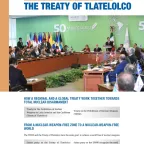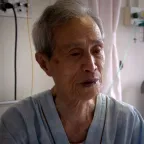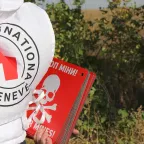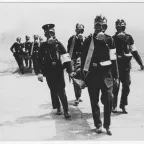THE TREATY ON THE PROHIBITION OF NUCLEAR WEAPONS AND THE TREATY OF TLATELOLCO
… The Treaty for the Prohibition of Nuclear Weapons in Latin America and the Caribbean (or … and the Treaty on the Prohibition of Nuclear Weapons (TPNW) share a common …
… The Treaty for the Prohibition of Nuclear Weapons in Latin America and the Caribbean (or … and the Treaty on the Prohibition of Nuclear Weapons (TPNW) share a common …

… IMAGES COULD BE DISTRESSING. Many of today's nuclear bombs are ten times more powerful than … of the Treaty on the Non-Proliferation of Nuclear Weapons failed to agree a move forward towards …

… of chemical, biological, radiological and nuclear hazards, also known as CBRN. It … promotes IHL provisions related to the use of weapons. Dissemination sessions as stand-alone …

… of the States Parties to the Chemical Weapons Convention, 30 November – 4 December … that, for the third successive year, chemical weapons have been used in armed conflict. The … use of chemical, biological, radiological, or nuclear weapons still stands. States and the …
… legal and ethical issues raised by autonomous weapons systems, the ICRC convened a … The recent Treaty on the Prohibition of Nuclear Weapons, adopted in July 2017 by a … of 122 States, recognizes that the use of nuclear weapons would be “abhorrent to the …
… Conference on The Human Impacts of Autonomous Weapons, Port of Spain, Trinidad and Tobago … Conference: The Human Impacts of Autonomous Weapons. The International Committee of the … but a few examples such as when it comes to nuclear, chemical and biological weapons, …

… Five questions on chemical weapons with Johnny Nehme, a chemical, biological, radiological, nuclear expert at the ICRC: 1. In your view, why are chemical weapons banned? Their indiscriminate nature. …

… Geneva (ICRC-IFRC) – Seventy-four years after nuclear weapons obliterated the Japanese cities of Hiroshima and Nagasaki, the risk that nuclear weapons will again be used is growing. …
… the context of cyber warfare and autonomous weapons, is IHL still relevant? Or, is it too … such as the Treaty on the Prohibition of Nuclear Weapons of 2017. They focussed on two new …

… ‘autonomous weapon systems’ were defined as weapons that can independently select and … on the Legality of the Threat or Use of Nuclear Weapons, the International Court of … I. 105 ICJ, Legality of the Threat or Use of Nuclear Weapons, Advisory Opinion, ICJ Reports …
Try one of the following resources:
Created in 1863, the ICRC library, alongside the ICRC archives, provides an indispensable documentary reference on the organization itself and international humanitarian law.
International humanitarian law is based on a number of treaties, in particular the Geneva Conventions of 1949 and their Additional Protocols, and a series of other instruments.
Customary international humanitarian law consists of rules that come from "a general practice accepted as law" and that exist independent of treaty law.